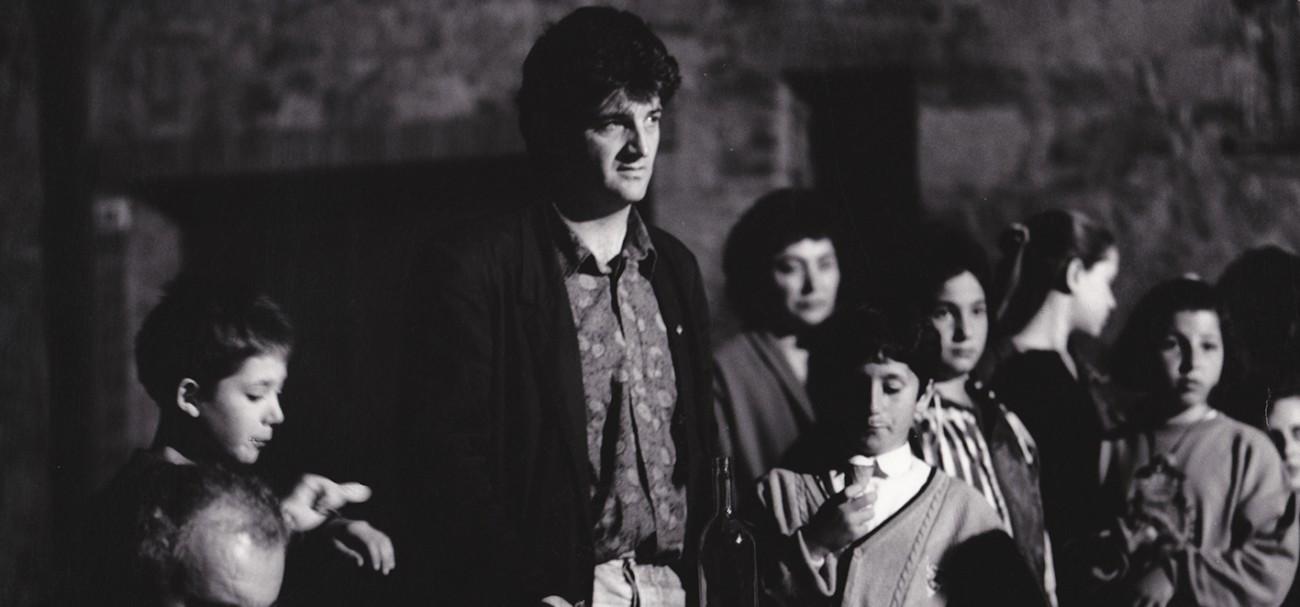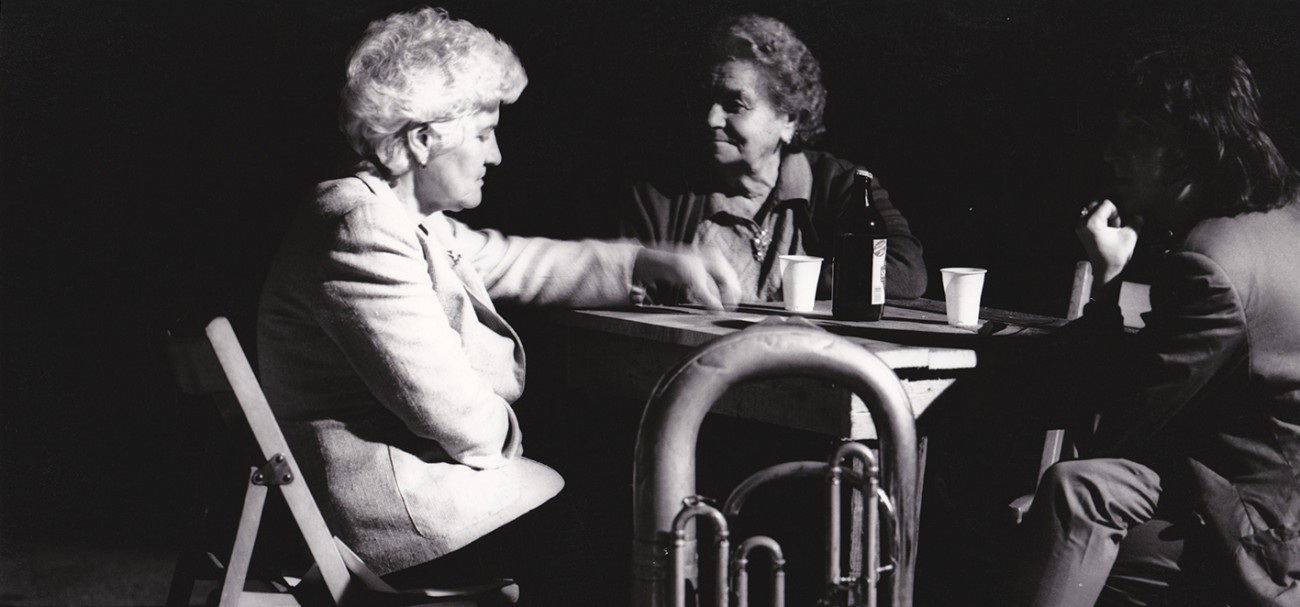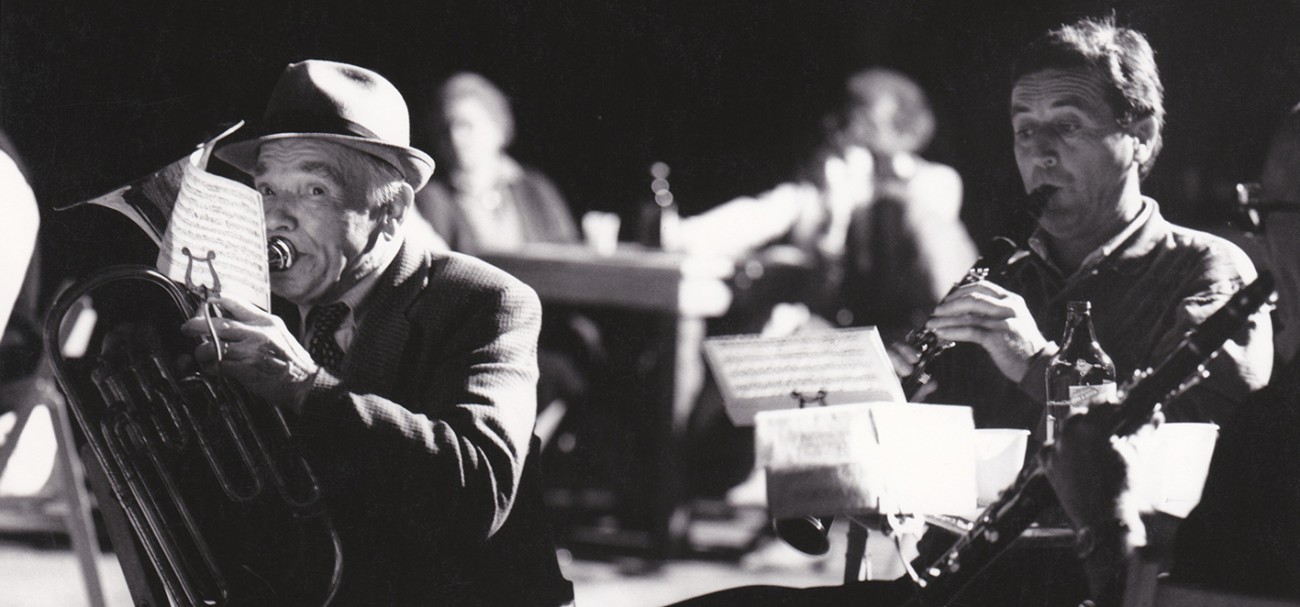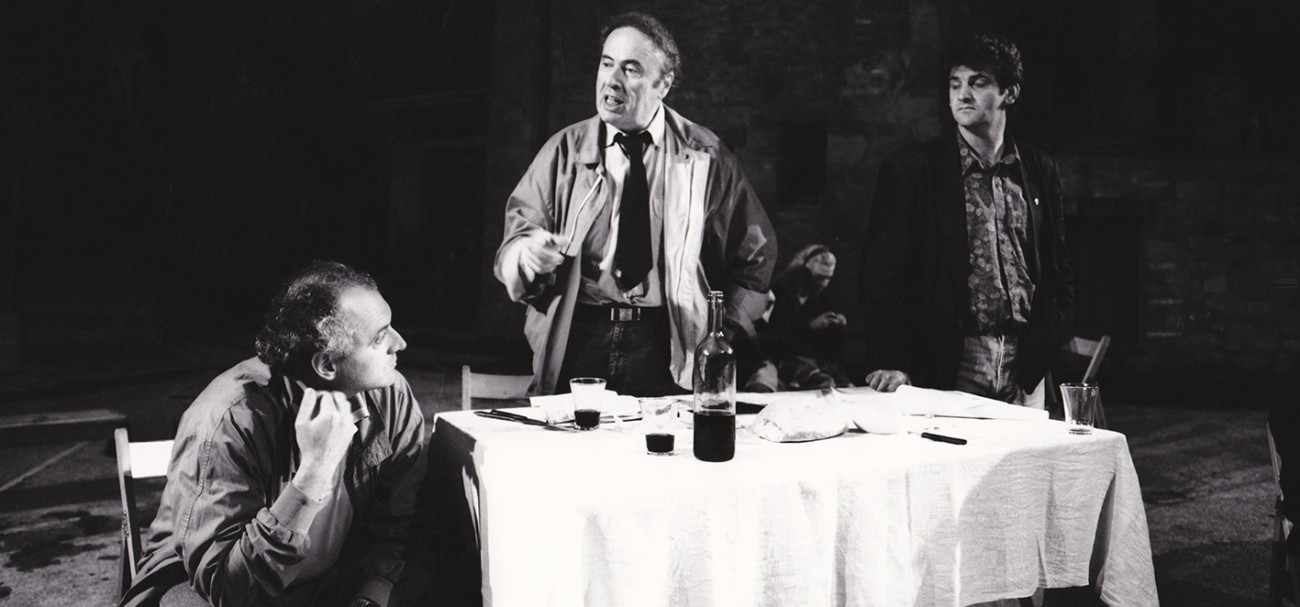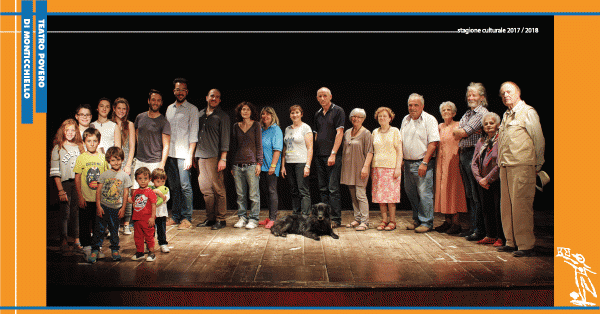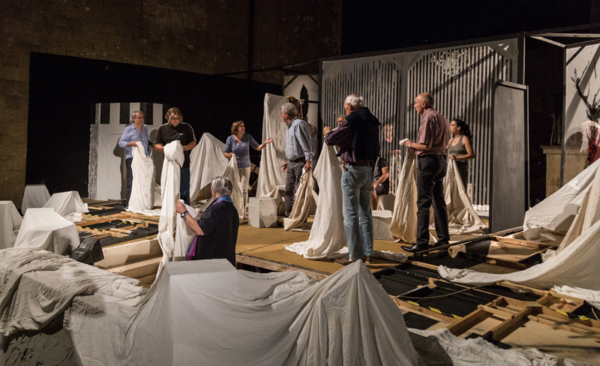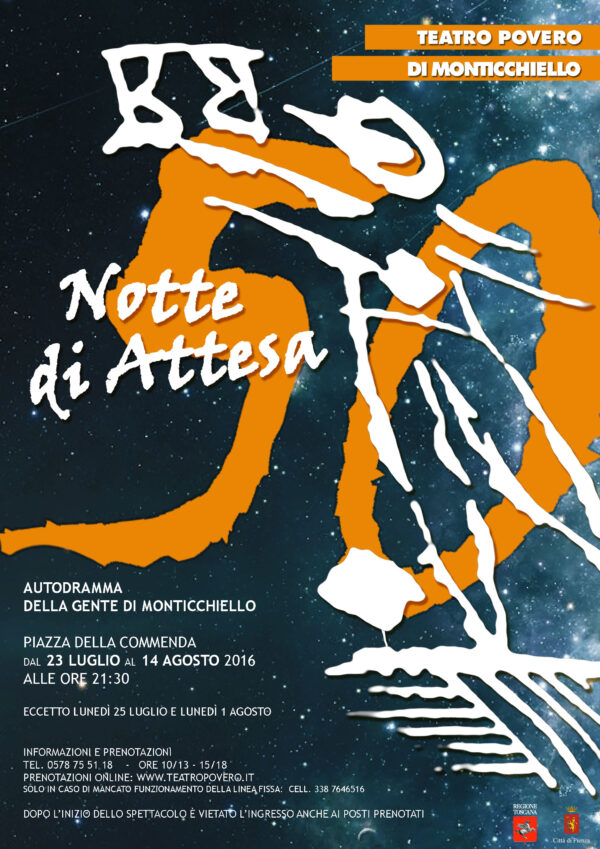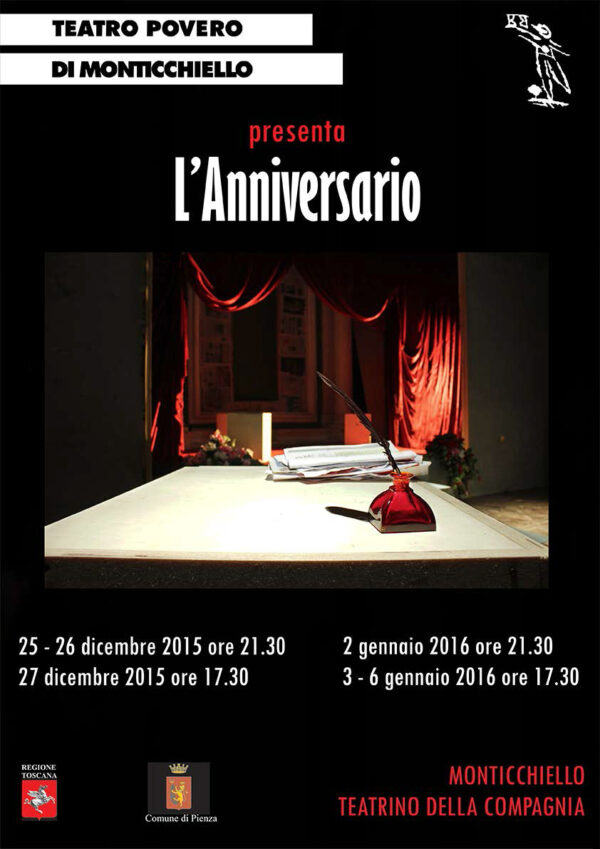This year’s theme was ‘disorientation’, and the title is a play on words. Ariadne’s thread (filo) in the myth was the key to the labyrinth of Crete (Creta), where the monster had to be found and killed. But creta is also the clay soil of the Val d’Orcia, to which the people of this zone have been attached and in which (like it or not) they find some of their identity. In the labyrinth of modern life, beset with contradictory advice and information, is this creta/clay something to hang on to, something to guide Monticchiello through the maze?
As usual, the village explored its theme via two separate historical moments—before and after the collapse of traditional peasant life and values.
The first act was set in the peasant world of the late 1950s, the moment when the sharecropping system was falling into an incurable crisis, and about to collapse. On the one hand this seemed to offer an unheard-of liberation to the peasants, a relief from subordination to the landlord. On the other hand, though, the possibility of acquiring for themselves the land (the ‘clay’) which they farmed was disturbing, and the resulting financial independence was difficult to contemplate.
The second act, notionally set in modern times, started with an implausible festival in which clay, as a substance, was celebrated. This was transformed into a fragmentary set of disconnected maze-like images, all expressing the uncertainty and disorientation which the modern world can provoke. It led to a suggestion that attachment to the ‘clay’, to the earth on which Monticchiello stands, might provide a sense of security—a ‘thread’ which would show an exit from the labyrinth.

